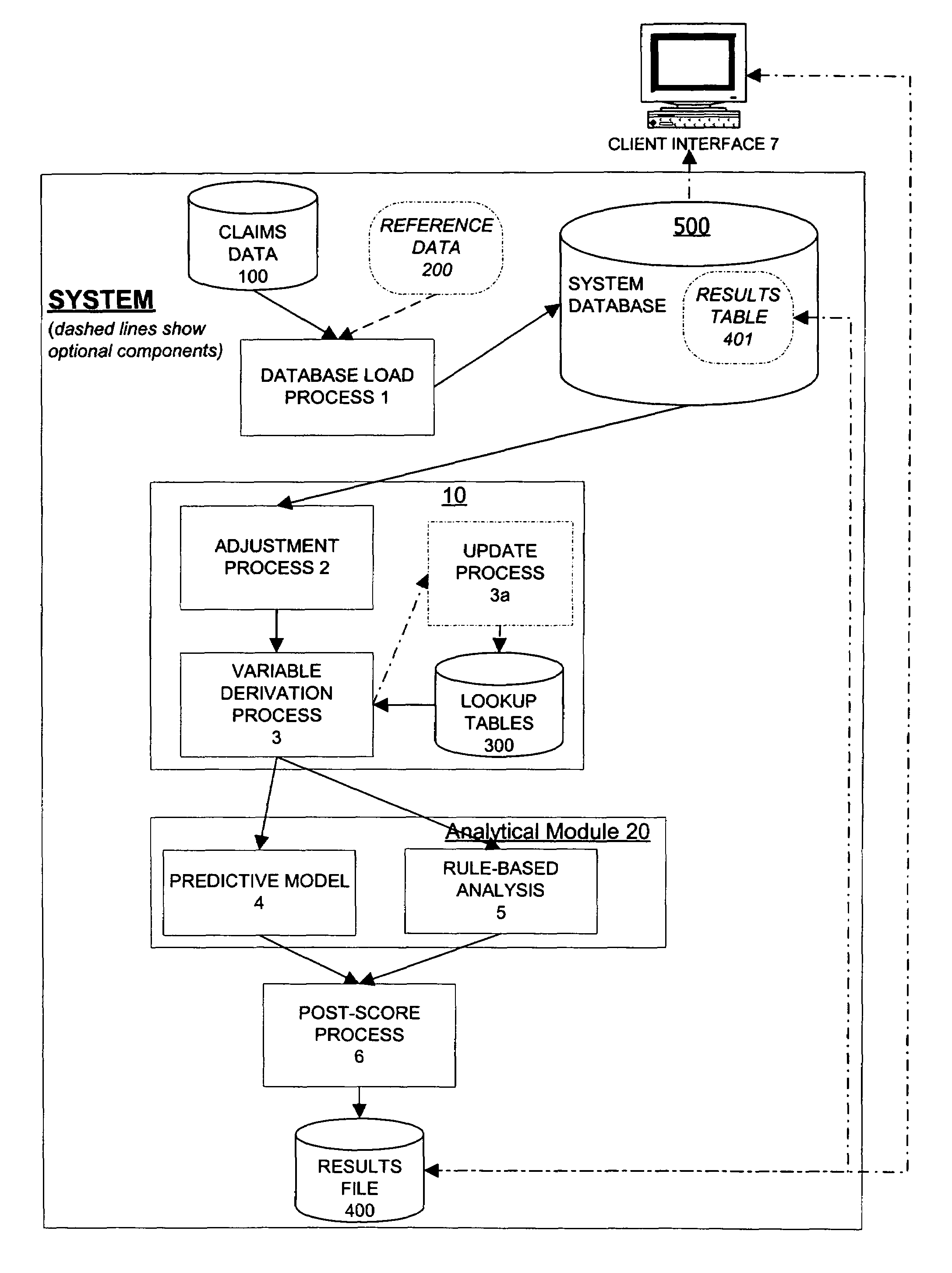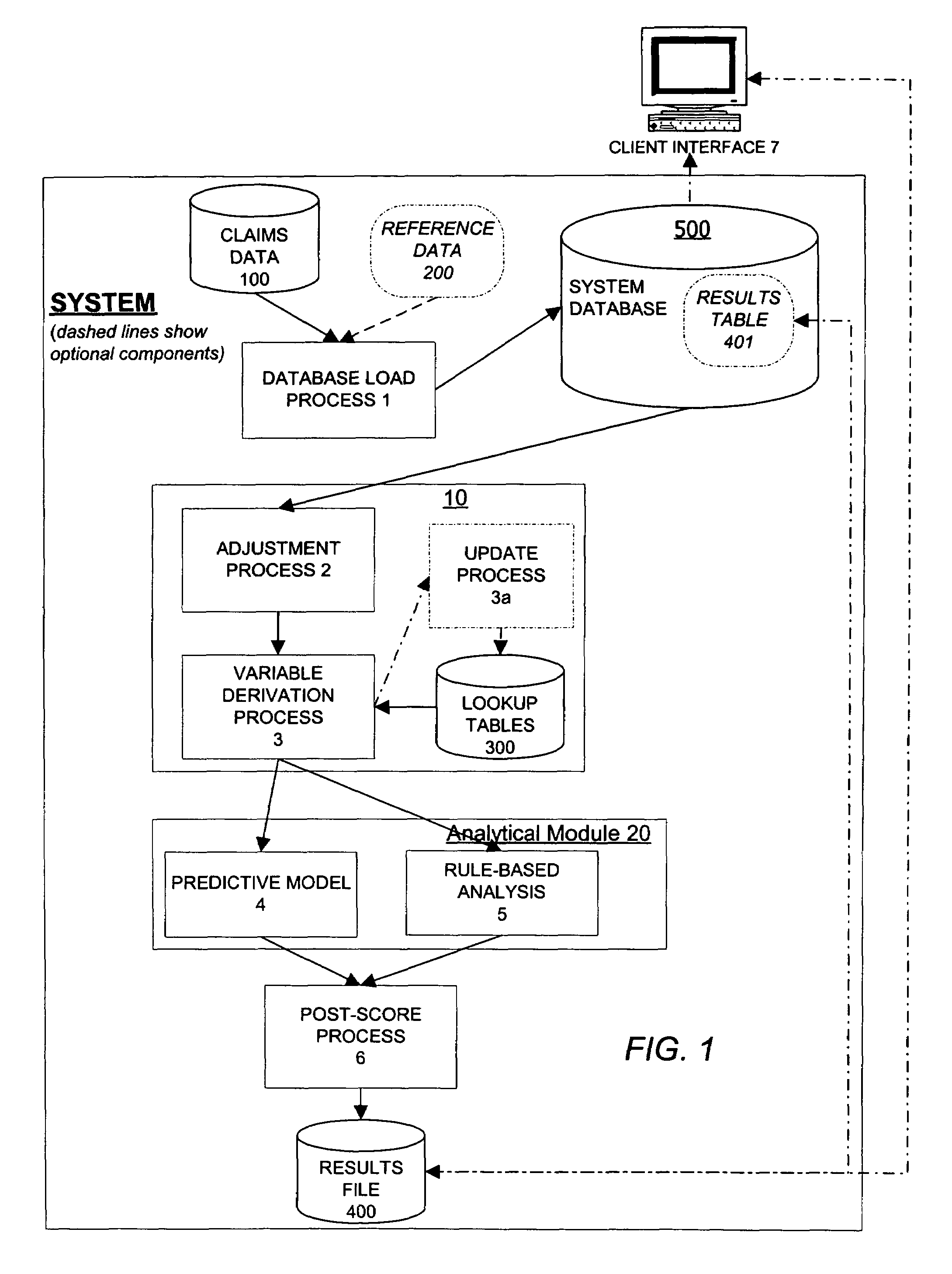Sequencing models of healthcare related states
a sequencing model and state technology, applied in the field of healthcare reimbursement claims analysis, can solve problems such as potentially fraudulent or abusive snf, and achieve the effect of less intensive resources
- Summary
- Abstract
- Description
- Claims
- Application Information
AI Technical Summary
Benefits of technology
Problems solved by technology
Method used
Image
Examples
example 1
[0103]There are situations where facilities rotate clients in certain patterns. An example is in prospective payment system hospitals where payments are made in fixed amounts and not on a per diem basis. Here the hospital may discharge the client or send her to less expensive facilities. If the clients are not well enough to be discharged, they may end up being readmitted to the hospital which is an indicator of poor quality of care, and hence an abuse of the payment system. Some of these metrics, therefore, characterize specific chains such as inp-snf-inp, inp-hha-inp or inp-ipp-inp etc., where the client moves from the hospital to another facility and back to the hospital. Say we are looking at the problem of facility transitions by clients and are interested in the inp-snf-inp sequence, but the first ‘inp’ refers specifically to facility XYZ, one of the entities being profiled and not all inpatient facilities in general. The second ‘inp’ could be any inpatient facility. In this c...
example 2
[0105]Another such metric would be the computation of readmission probability to a facility within a specified time, say 7 days. If clients that are discharged from a facility are readmitted within a few days to the facility and this happened at a fairly high rate, as shown by a relatively high transition probability for the facility, then this may indicate that the discharged clients are not well enough to be discharged in the first place. The metric is calculated in much the same manner as above where the transition probability of the inp-inp sequence is computed, where both the ‘inp’ states pertain to facility XYZ with the condition that the transition happen within 7 days of discharge.
example 3
[0106]Yet another example would be the admission of clients to a SNF. A SNF is typically a less expensive facility than a hospital and also provides less intensive care. An admission to a SNF requires a minimum qualifying stay of three days at a hospital prior to the admission. If hospitals are keeping clients just long enough to meet the qualifying rule prior to discharge to a SNF, this may indicate poor quality of care, especially if done at a great rate. Computation of this metric would involve again the inp-snf transition probability as before, but with different constraints. The denominator would be the total number of discharges from inp facility XYZ to a SNF, and the numerator would be the number of these discharges that had an exactly three day stay at the ‘inp’ state. The data processing operations for creating the sequences are readily adjusted to identify these sequences.
PUM
 Login to View More
Login to View More Abstract
Description
Claims
Application Information
 Login to View More
Login to View More - R&D
- Intellectual Property
- Life Sciences
- Materials
- Tech Scout
- Unparalleled Data Quality
- Higher Quality Content
- 60% Fewer Hallucinations
Browse by: Latest US Patents, China's latest patents, Technical Efficacy Thesaurus, Application Domain, Technology Topic, Popular Technical Reports.
© 2025 PatSnap. All rights reserved.Legal|Privacy policy|Modern Slavery Act Transparency Statement|Sitemap|About US| Contact US: help@patsnap.com



